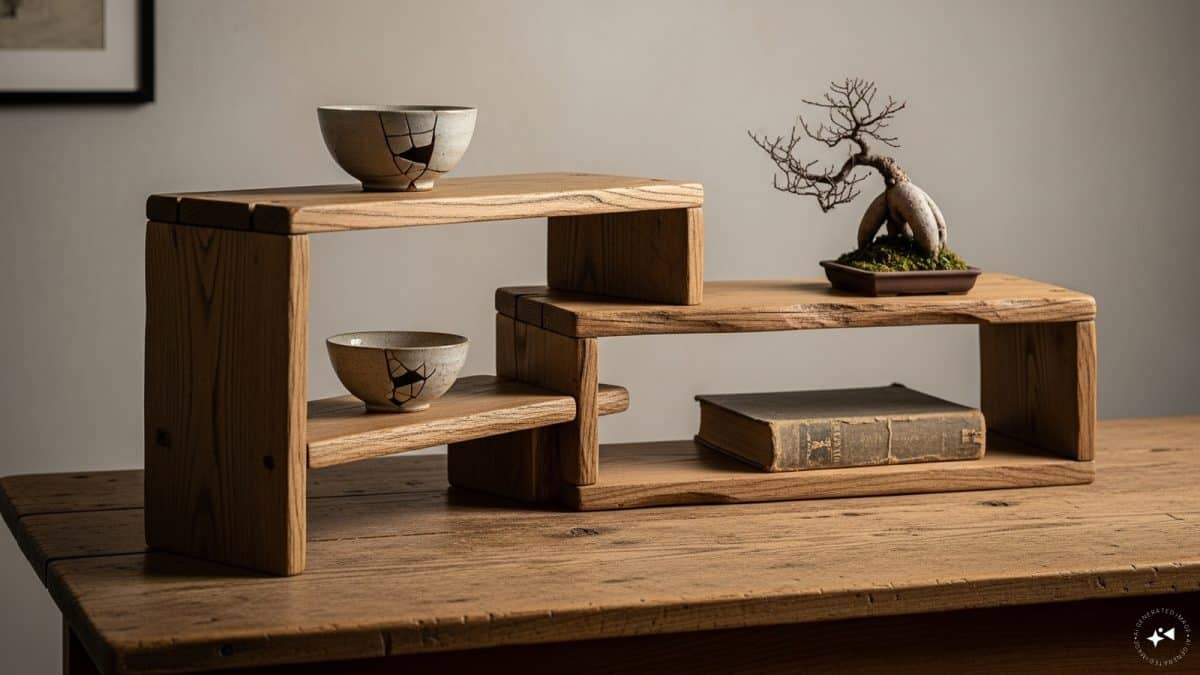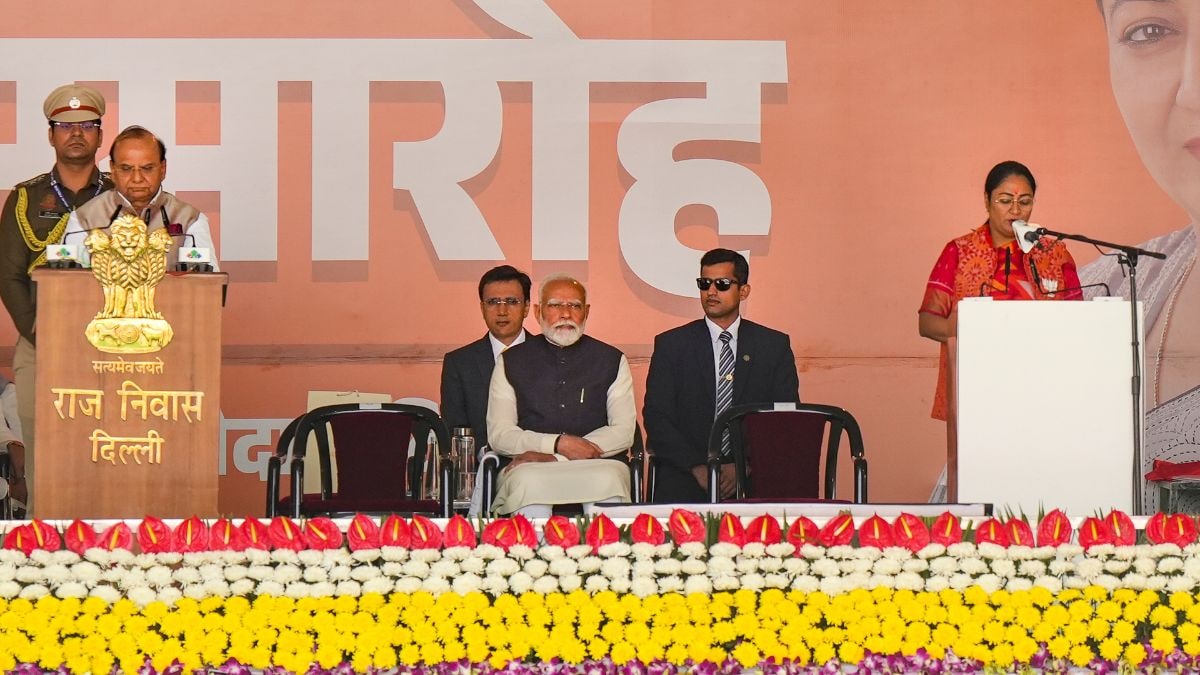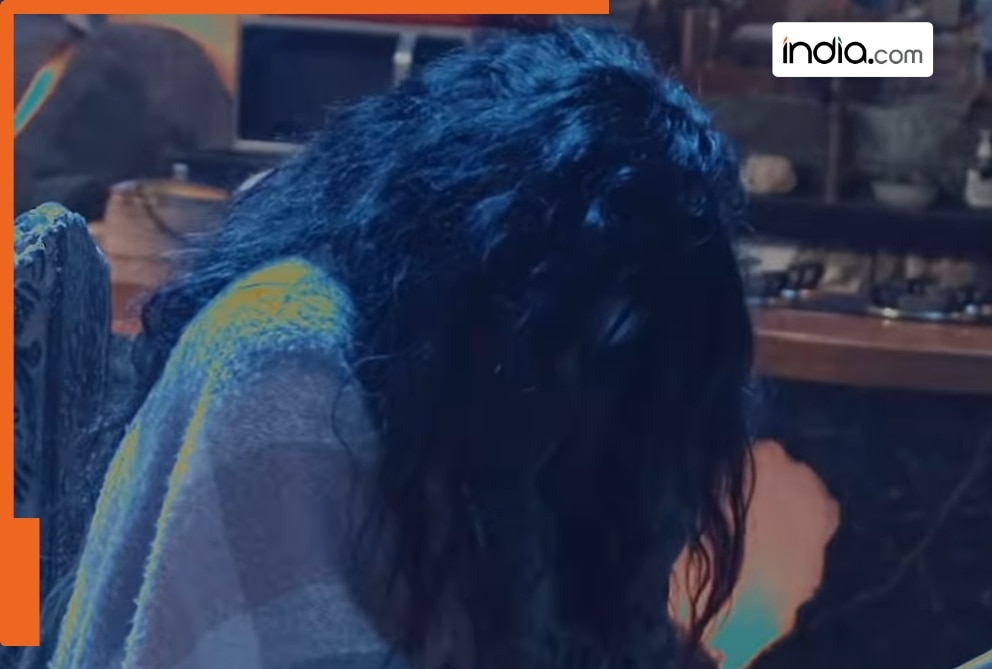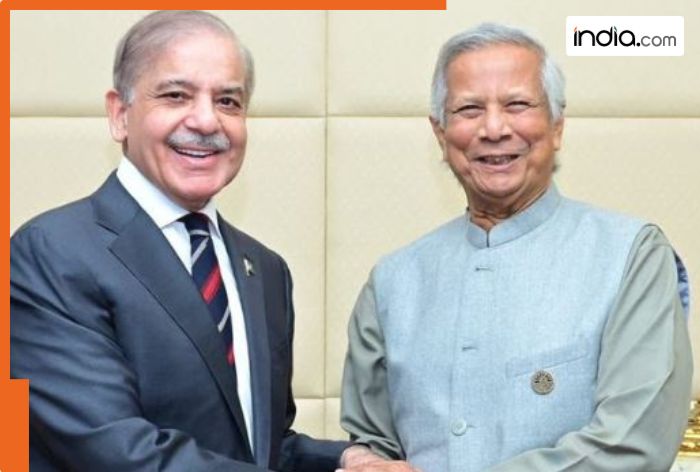Is Egypt's most iconic site, Tutankhamun’s tomb, in danger of collapse?
Over a century after its discovery, King Tutankhamun’s 3,300-year-old tomb in Luxor’s Valley of the Kings faces its greatest peril. Cracks, fungal decay, and humidity-driven damage are weakening the ancient structure carved from fragile Esna shale. Experts warn the burial site could collapse without urgent intervention
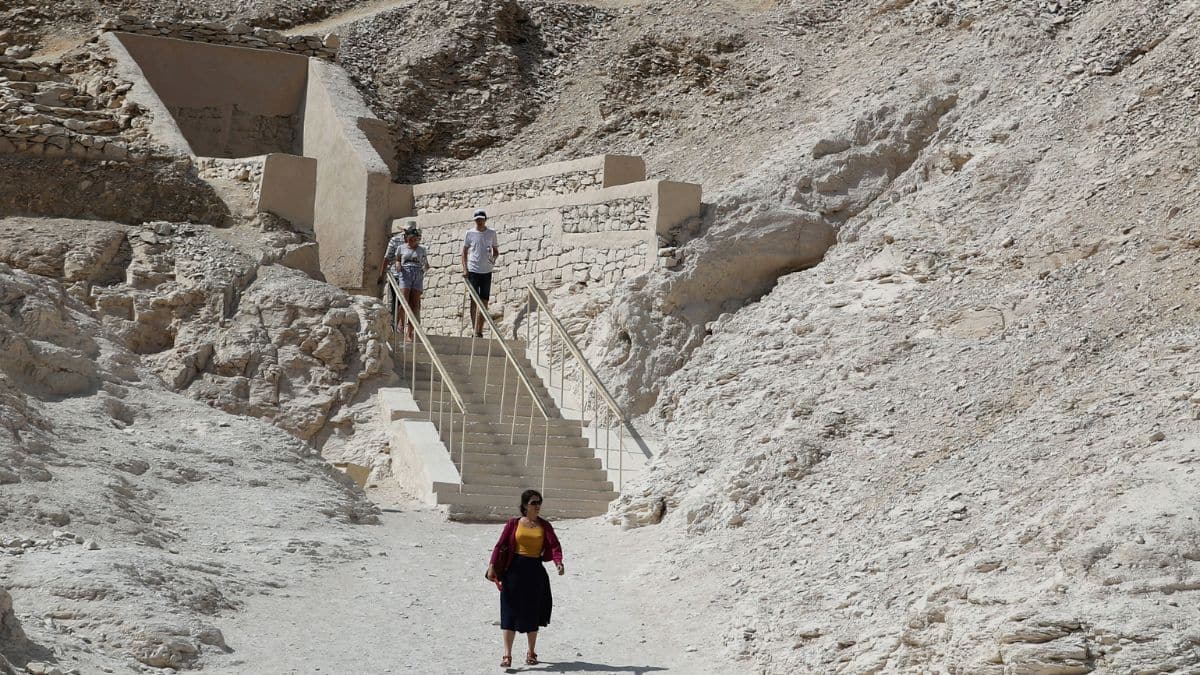
More than a century after the discovery that reshaped Egyptology, the tomb of Pharaoh Tutankhamun — known globally for its golden treasures and intricate wall art — is now under severe structural strain.
Located deep within Luxor’s Valley of the Kings, this 3,300-year-old burial site has deteriorated to its weakest state since its unearthing in 1922.
Archaeologists and geological experts warn that the physical condition of the tomb, officially catalogued as KV62, has reached a critical point.
STORY CONTINUES BELOW THIS AD
A series of structural fissures, humidity-driven decay, and biological growth are threatening to undo the preservation efforts that once kept the boy king’s tomb intact.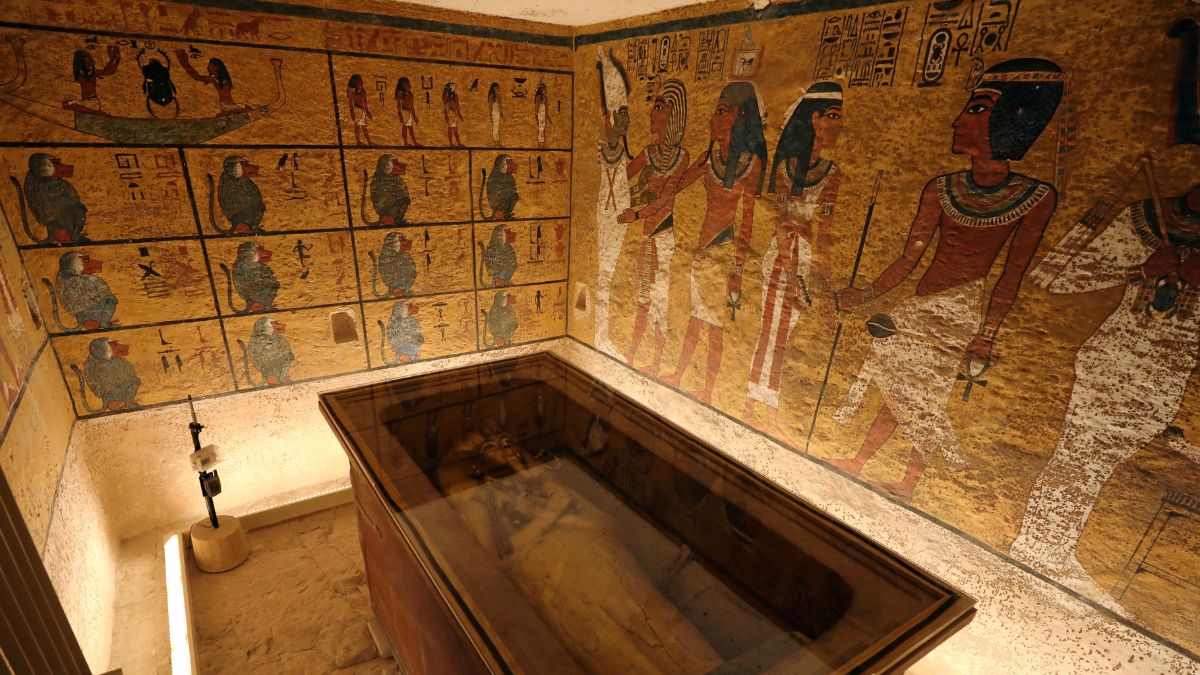)
The concern is no longer theoretical; recent assessments describe the tomb’s condition as potentially catastrophic if not urgently addressed.
What the alarming findings were
A new study by researchers at Cairo University, published in Nature’s npj Heritage Science, has raised the alarm about the extent of the tomb’s structural distress.
Professor Sayed Hemeda, who co-authored the study, described the condition as “alarming,” pointing to “current and future risks” that could undermine the integrity of the structure.
The most dangerous of these threats stems from a deep crack that now spans the ceiling of both the burial chamber and the entrance passage.
This fissure has allowed rainwater to seep into the delicate layers of Esna shale — the weak sedimentary rock from which the tomb is carved.
As the rock absorbs moisture, it swells; when it dries, it contracts. These cyclical changes create immense stress, gradually warping the ceiling and widening the existing fractures.
Hemeda’s analysis notes that “the major fissure cutting across the ceilings of both the burial chamber and the entrance had allowed rainwater to penetrate and worsened the cracks, placing the ceiling under pressures exceeding the capacity of Esna shale rock to withstand, particularly given its tendency to expand and contract with fluctuations in humidity.”
STORY CONTINUES BELOW THIS AD
The findings confirm that the geological composition of the Valley of the Kings — dominated by soft shale and limestone — was never ideal for long-term stability.
What once offered concealment for royal burials has become a geological weakness, now putting one of the world’s most iconic monuments at risk.
How flash floods resulted in a long-term crisis
Much of the tomb’s current fragility can be traced to a single environmental event more than three decades ago.
In 1994, a rare but powerful desert flood swept through the Valley of the Kings, carrying silt and water into the subterranean chambers.
The floodwaters infiltrated Tutankhamun’s tomb, saturating the shale walls and leaving behind trapped moisture that would continue to wreak havoc over the years.
The increased humidity triggered the spread of fungi across the chamber walls, where intricate paintings once depicted the young pharaoh’s journey to the afterlife.
Over time, these microbial colonies consumed organic pigments, leaving dark spots and faded hues across priceless murals.
Even today, humidity levels inside the tomb remain unstable, continuing to corrode both the rock and the art it supports.
STORY CONTINUES BELOW THIS AD
How the mountain above is cracking as well
According to Professor Mohamed Atia Hawash from Cairo University’s Faculty of Archaeology, fractures in the surrounding cliffs are growing.
These cracks have been documented not only within the valley itself but also in the nearby Deir el-Bahari area, which houses the famous mortuary temple of Queen Hatshepsut.
Hawash warns that these fissures increase the likelihood of rockfalls. “The surrounding mountains themselves suffer from extensive fissures, not only in the valley but also in the Deir el-Bahari area where the mortuary temple of Queen Hatshepsut is located,” he told Independent Arabia.
“A disaster could strike at any moment, and if the Valley of the Kings is to be preserved, action must be taken before it is too late.”
Experts fear that a major collapse of the mountain’s outer layers could send tonnes of rock cascading down, potentially crushing multiple tombs, including Tutankhamun’s. The scale of such a collapse could obliterate millennia of heritage in a single geological incident.
How Tutankhamun’s tomb is unique in its fragile design
When British archaeologist Howard Carter uncovered Tutankhamun’s tomb on November 4, 1922, the discovery captured global imagination. Yet what set the tomb apart — its relatively small scale and undisturbed state — has also become a source of vulnerability.
Unlike the sprawling royal tombs of earlier pharaohs, Tutankhamun’s resting place consists of only four main chambers: an entrance corridor, an antechamber where chariots and furniture were found, the burial chamber housing three nested coffins, and a treasury filled with funerary artefacts.
STORY CONTINUES BELOW THIS AD
)
Archaeologists believe this compact design was a result of the pharaoh’s sudden death at around 19 years of age, forcing officials to repurpose a non-royal tomb.
The Esna shale that forms the tomb’s core was never intended to support such elaborate wall paintings and stone carvings.
As a result, every crack and every shift in the rock layer carries the potential to distort, or even destroy, these artistic relics of the Eighteenth Dynasty.
How the entire Valley of the Kings is at risk
Tutankhamun’s tomb is only one part of a much larger system of ancient royal burials. The Valley of the Kings, located west of Luxor, contains more than sixty tombs carved into the mountainside.
The entire area faces geological instability due to centuries of erosion and repeated flash floods.
Hawash’s research highlights that the valley’s geology — weak, layered shale and brittle limestone — makes it highly susceptible to moisture-related deformation.
Periodic flash floods, especially during rare but intense rainfall events, lead to water infiltration that further weakens the already fragile structures.
The 1994 flood was one of the most destructive, but subsequent smaller rainfalls have continued to erode protective barriers and fill underground cavities with moisture.
Even the nearby cliffs, which form a natural shield over the tombs, are riddled with cracks that could one day trigger collapses.
STORY CONTINUES BELOW THIS AD
The valley, though recognised as part of the Unesco World Heritage site of Ancient Thebes and its Necropolis, remains in danger due to insufficient risk mitigation measures.
Despite repeated warnings from the archaeological community, little has been done to implement a systematic preservation strategy for the Valley of the Kings.
Hawash noted the disparity between Egypt’s ability to monitor risks and the absence of a preventive culture. Speaking to Independent Arabia, he explained, “We have the ability to monitor risks scientifically, but the absence of a culture of prevention means we only react after disaster strikes.”
This reactive approach, experts say, leaves the valley and its tombs perpetually vulnerable.
What next for Tutankhamun’s tomb
Emad Mahdi, a member of the Egyptian Archaeologists’ Union, has called for immediate intervention at the highest levels.
“A high-level expert committee should be formed immediately to analyse the site geologically and archaeologically, assess the impact on the wall inscriptions, develop a precise risk profile, and prepare an urgent report for the highest authorities to enable swift action to save it,” he told Independent Arabia.
STORY CONTINUES BELOW THIS AD
Mahdi expressed deep concern about the apparent absence of consistent risk assessment or preventive oversight, stating that preservation should be continuous rather than reactive.
“As an archaeologist, I am deeply saddened by the state of the tomb. This crisis requires practical solutions, such as establishing a specialised risk-monitoring body composed of academics who issue reliable reports and continuously oversee the safety of archaeological sites. Where are the regular reports tracking threatened sites and outlining intervention and protection measures?”
Experts have proposed multiple measures to stabilise the tomb. These include reinforcing the mountain above to reduce downward pressure, installing removable internal supports that do not compromise the tomb’s historical authenticity, and regulating temperature and humidity to minimize further rock expansion.
For Egyptologists, Tutankhamun’s tomb remains a cornerstone of modern archaeology. Its discovery revealed over 5,000 artifacts, including gilded statues, royal chariots, ceremonial weapons, and the now-iconic golden funerary mask.
These treasures provided unparalleled insights into the life and death of Egypt’s young ruler and the spiritual rituals of the New Kingdom.
STORY CONTINUES BELOW THIS AD
Also Watch:
With inputs from agencies
What's Your Reaction?


























